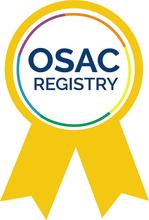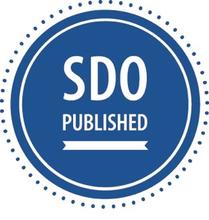December 2020
This Standards Bulletin from the Organization of Scientific Area Committees (OSAC) for Forensic Science provides an update on:
- Standards moving through the OSAC Registry approval process.
- Standards moving through the development process at standards developing organizations (SDOs).
New standards placed on the OSAC Registry: 4
Standards under consideration for the OSAC Registry and open for comment: 4
Documents recently published by an SDO: 3
SDO documents open for comment: 4
In this issue
OSAC Registry Updates

The OSAC Registry is a repository of high-quality, technically sound published and proposed standards for forensic science. These written documents define minimum requirements, best practices, standard protocols and other guidance to help ensure that the results of forensic analysis are reliable and reproducible.
New Documents on the OSAC Registry
- ASTM E1388-17 Standard Practice for Static Headspace Sampling of Vapors from Fire Debris Samples.
- ASTM E1412-19 Standard Practice for Separation of Ignitable Liquid Residues from Fire Debris Samples by Passive Headspace Concentration with Activated Charcoal.
- ASTM E1413-19 Standard Practice for Separation of Ignitable Liquid Residues from Fire Debris Samples by Dynamic Headspace Concentration onto an Adsorbent Tube.
- ASTM E3189-19 Standard Practice for Separation of Ignitable Liquid Residues from Fire Debris Samples by Static Headspace Concentration onto an Adsorbent Tube.
Standards Under Consideration for the OSAC Registry
SDO Published Standards Open for Comment
The following SDO published standards are being considered for the OSAC Registry. Please submit your comments by 11:59 p.m. ET on January 4, 2021 on whether they should be included on the Registry:
- ANSI/ASB Best Practice Recommendation 009, Best Practice Recommendations for the Examination of Human Remains by Forensic Pathologists in the Disaster Victim Identification Context, First Edition, 2019. Submit your comments here.
- ANSI/ASB Standard 018, Standard for Validation of Probabilistic Genotyping Systems, First Edition, 2020. Submit your comments here.
- ANSI/ASB Best Practice Recommendation 021, Best Practices for the Preparation of Test Impressions from Footwear and Tires, First Edition, 2019. Submit your comments here.
OSAC Proposed Standards Open for Comment
The following OSAC Proposed Standard is being considered for the OSAC Registry. Please submit your comments/suggestions on the wording included in this draft standard and include whether it should be included on the OSAC Registry. To submit your feedback, complete the OSAC comment template and send it to comments [at] nist.gov (comments[at]nist[dot]gov) by 11:59 p.m. ET on January 4, 2021:
Standards Moved to Comment Adjudication
- ANSI/ASB Standard 053, Standard for Report Content in Forensic Toxicology, First Edition, 2020.
- ASTM E1968-19 Standard Practice for Microcrystal Testing in Forensic Analysis for Cocaine.
- ASTM E1969-19 Standard Practice for Microcrystal Testing in Forensic Analysis for Methamphetamine and Amphetamine.
- ASTM E2125-19 Standard Practice for Microcrystal Testing in Forensic Analysis for Phencyclidine and its Analogues.
- ASTM E2548-16 Standard Guide for Sampling Seized Drugs for Qualitative and Quantitative Analysis.
- ASTM E2882-19 Standard Guide for Analysis of Clandestine Drug Laboratory Evidence.
Criminal justice agencies can access the ASTM standards listed above by visiting OSAC’s Access to Standards webpage.
For a list of all standards currently under Registry consideration, please visit the OSAC website.
Has your organization already started implementing OSAC Registry approved standards? Complete OSAC’s Laboratory Implementation Declaration Form and send it
to mark.stolorow [at] nist.gov (mark[dot]stolorow[at]nist[dot]gov) to let us know. Share your implementation experience and be featured in a future OSAC news post.
SDO Updates

Documents Recently Published by an SDO
The following three documents have recently been published by an SDO:
- ANSI/ASB Standard 093, Standard Test Method for the Examination and Testing of Firearms, First Edition, 2020. This document, initially drafted by OSAC’s Firearms & Toolmarks Subcommittee and finalized by the ASB Firearms and Toolmarks Consensus Body, establishes standard procedures for the examination and testing of a firearm by firearm and toolmark examiners or technicians. Following these procedures, an examiner or technician will be able to conduct, document, and report the examination and testing of a firearm.
- ASB Best Practice Recommendation 126, Best Practice Recommendation for Casting Footwear and Tire Impression Evidence at the Crime Scene, First Edition, 2020. This document, initially drafted by OSAC’s Footwear & Tire Subcommittee and finalized by the ASB Footwear and Tire Consensus Body, provides best practice recommendations for casting of footwear and tire impression evidence by appropriate personnel.
- ISO 20888:2020 – Vocabulary and designation system for forensic oro-dental data.
SDO Documents Open for Comment
ASB:
- ASB Standard 132, Standard for Population Affinity in Estimation in Forensic Anthropology. This standard provides procedures for the estimation of population affinity from skeletal material. Specific methods and techniques are not included. This standard is not applicable to subadult skeletal remains, when cranial and postcranial features are not fully developed. Comment deadline December 7, 2020.
- ASB Standard 127, Standard for the Preservation and Examination of Charred Documents. This document establishes the minimum required procedures used by Forensic Document Examiners (FDEs) in the preservation of, examination of, and reporting on charred documents. This generally includes the examination of charred documents for content (writing, printing), material (paper, cardboard, plastic etc.) and source determination. This does not include chemical examination of documents for accelerants or source of combustion. Comment deadline December 14, 2020.
- ASB Standard 128, Standard for the Preservation and Examination of Liquid Soaked Documents. This document establishes the minimum required procedures used by FDEs in the preservation of, examination of, and reporting on liquid-soaked documents. This generally includes the examination of documents exposed to liquids (water, blood, oils etc.) for content (writing, printing), material (paper, cardboard, plastic etc.), and source determination. This standard does not include the examination of documents for the identification of the liquid contaminate(s). Comment deadline December 14, 2020.
- Recirculation* – ASB Standard 061, Firearms and Toolmarks 3D Measurement Systems and Measurement Quality Control. This document provides requirements for the measurements systems (the instruments and included scan acquisition software) which capture data beyond a flat 2D photographic image for Firearm and Toolmark Analysis (these systems are referred to as 3D systems in this document). This standard provides requirements to ensure the instrument’s accuracy, to conduct instrument calibration, and to estimate measurement uncertainty for each axis (X, Y, and Z). Included in the standard are procedures for validation of 3D system hardware. The focus of this standard is on the hardware and resulting measurement data and does not include the requirements for measurement systems software. Comment deadline January 14, 2021.
*Comments on a re-circulation will only be accepted on revised sections of a document, comments made to text not revised from the original comment period will not be accepted.
For the ASB documents listed above, download the comment template and return it to asb [at] aafs.org (asb[at]aafs[dot]org) by the comment deadline.
Other News
Input Needed: Analysis of Marijuana Survey
OSAC’s Seized Drugs Subcommittee is collecting information on current forensic practices with regards to the analysis of marijuana. Share your feedback and be part of the process in helping to develop a consensus-based and useful forensic science standard.
Webinar: Mock Juror Perceptions of Forensics
The Center for Statistics and Applications in Forensic Evidence (CSAFE) invites researchers, collaborators, and members of the broader forensics and statistics communities to participate in the webinar, “Mock Juror Perceptions of Forensics”, on Tuesday, December 8 from 11:00 – 12:00 pm CST.
Get Involved with OSAC
OSAC offers a variety of ways for members, affiliates and other experts in the forensic science community to participate in the standards advancement process. Click here to learn how you can help make an impact on the forensic science community through standards.

